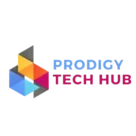Information is the currency of decision-making, and those
who possess it are empowered to shape their own destiny.
Crafting the Perfect Remote Work Portfolio: Essential Elements to Stand Out
This isn’t just a collection of your past projects; it’s a dynamic, living testament to your skills, professionalism, and ability to thrive in a remote environment.
This guide will delve into the essential elements that make a remote work portfolio irresistible to employers, providing actionable tips and examples to help you stand out from the crowd.

In today’s globalized workforce, remote work is no longer a niche but a powerful paradigm shift. As more companies embrace distributed teams, the competition for remote roles intensifies. Your resume and cover letter are just the entry points; what truly sets you apart is a meticulously crafted remote work portfolio. This isn’t just a collection of your past projects; it’s a dynamic, living testament to your skills, professionalism, and ability to thrive in a remote environment.
This guide will delve into the essential elements that make a remote work portfolio irresistible to employers, providing actionable tips and examples to help you stand out from the crowd.
Why a Remote Work Portfolio is Your Secret Weapon
Unlike traditional office roles where in-person interviews and company culture might be readily assessed, remote employers rely heavily on tangible proof of your capabilities. A strong portfolio:
Showcases your work directly: Employers can see what you’ve done, not just read about it.
Demonstrates your skills in action: It provides evidence of your proficiency in various tools and methodologies.
Builds trust and credibility: Testimonials and case studies offer social proof of your effectiveness.
Highlights your remote-readiness: It can subtly convey your organizational skills, communication style, and ability to work independently.
Serves as a conversation starter: It provides concrete examples to discuss during interviews.
Essential Elements of a Stand-Out Remote Work Portfolio
Let’s break down the core components that will elevate your portfolio from good to exceptional.
1. A Professional and User-Friendly Platform
Your portfolio’s home needs to be easily accessible and visually appealing.
Dedicated Website/Platform: This is the gold standard. Platforms like Squarespace, Wix, Webflow, or even a custom-built WordPress site offer professional templates and easy customization. For developers, GitHub Pages or Netlify can be excellent choices.
Clear Navigation: Make it intuitive for employers to find what they’re looking for. Use clear menus and logical organization.
Mobile Responsiveness: Ensure your portfolio looks great and functions perfectly on all devices, from desktops to smartphones.
Professional Branding: Consistent use of colors, fonts, and your personal logo (if you have one) creates a cohesive and memorable experience.
Actionable Tip: Before launching, ask a friend or colleague to navigate your portfolio and provide feedback on its ease of use and clarity.
2. Compelling Project Showcases
This is the heart of your portfolio. Don’t just list projects; tell a story about them.
Quality over Quantity: Focus on your best work, even if it means fewer projects. Each project should demonstrate a specific skill or achievement.
Problem-Solution-Impact Framework: For each project, clearly articulate:
The Problem: What challenge were you trying to solve?
Your Role & Approach: What exactly did you do? What tools or methodologies did you use?
The Solution/Deliverables: What was the end product? (e.g., website, marketing campaign, research paper, code repository).
The Impact/Results: Quantify your achievements whenever possible (e.g., “Increased website traffic by 30%”, “Reduced customer churn by 15%”, “Completed project 2 weeks ahead of schedule”).
Visual Elements: Include high-quality screenshots, videos, mockups, or links to live projects. For writers, provide links to published articles. For designers, showcase your design process. For developers, link to your GitHub repo and live demos.
Tailor to the Role: If you’re applying for different types of remote roles, consider creating slightly varied versions of your portfolio that highlight the most relevant projects for each application.
Example (for a Content Writer):
Project Title: Blog Content Strategy & Execution for “EcoLiving Solutions”
Problem: “EcoLiving Solutions,” a sustainable home goods brand, needed to increase organic traffic and establish itself as a thought leader in eco-friendly living.
My Role: Developed a comprehensive content strategy based on keyword research and competitor analysis. Wrote and optimized 15 blog posts (1000-1500 words each) over 3 months, focusing on SEO best practices and engaging storytelling.
Deliverables: Keyword-rich blog posts, content calendar, on-page SEO recommendations.
Impact: Within 6 months, organic traffic to the blog increased by 45%, and “EcoLiving Solutions” saw a 20% rise in newsletter sign-ups directly attributed to blog content. (Link to live blog posts).
